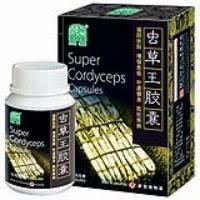Cordyceps
Scientific Name(s): Cordyceps sinensis (Berk.) Sacc. Family: Clavicipitaceae
Common Name(s): Cordyceps , Chinese caterpillar fungus , Cs-4 , Dong Chong Xia Cao , 1 , 2 semitake
Clinical Overview
Advertisement
Uses of Cordyceps
Affects numerous human body systems, including the circulatory, respiratory, and immune systems, as well as the liver, kidneys, and sex organs. Cordyceps has been used as an adjuvant in cancer therapy.
Cordyceps Dosing
Accurate dosing is not available. Many herbal supplements on the market contain varying undefined levels of this product.
Contraindications
Contraindications have not yet been identified.
Pregnancy/Lactation
Information regarding safety and efficacy in pregnancy and lactation is lacking. Avoid use.
Cordyceps Interactions
None well documented.
Cordyceps Adverse Reactions
Mild GI discomfort (including nausea, upset stomach, and dry mouth).
Toxicology
Cordyceps is considered to be very safe and an oral LD50 (median lethal dose) could not be defined. Doses in mice of 80 g/kg body weight did not cause death. One study indicated that Cordyceps is not mutagenic or teratogenic. There are reports from clinical studies of mild GI discomfort (including nausea, upset stomach, and dry mouth). In another report, some patients taking Cs-4 developed a systemic allergic reaction. 3
Botany
C. sinensis is a black, blade-shaped fungus found primarily in the high altitudes on the Tibetan plateau in China. Wild cordyceps is rare. This mushroom is parasitic and grows on and derives its nutrients from moth caterpillars. In the fall, the fungal mycelia infect the caterpillar. The fungal infestation kills the caterpillar by early summer of the following year, thus releasing the fruiting body. The wild form of C. sinensis is harvested, while the principal fungal mycelium ( Paecilomyces hepiali Chen) is cultivated aseptically. 2
History
The fruiting body and attached mycelium of cordyceps has been used in Chinese culture for centuries. In traditional Chinese medicine, it is valued for its activity in restoring energy, promoting longevity, and improving quality of life. C. sinensis affects numerous human body systems including the circulatory, respiratory, and immune systems, as well as the liver, kidneys, and sex organs. Cordyceps has been used as an adjuvant in cancer therapy. 2 , 3 , 4
Chemistry
Seven classes of natural chemical constituents are found in wild C. sinensis including proteins, peptides, all essential amino acids, and polyamines; saccharides and sugar derivatives; sterols; nucleosides (including adenine, uracil, uridine, guanosine, thymidine, and deoxyuridine); fatty acids and other organic acids; vitamins (including B 1 , B 2 , B 12 , E, and K); and inorganic elements. 2 , 5 Cordycepin and other adenosine derivatives, mannitol, several unique sterols and their glycosides, polysaccharides, and cyclic peptides have been identified. 6
Langganan:
Posting Komentar (Atom)

Tidak ada komentar:
Posting Komentar